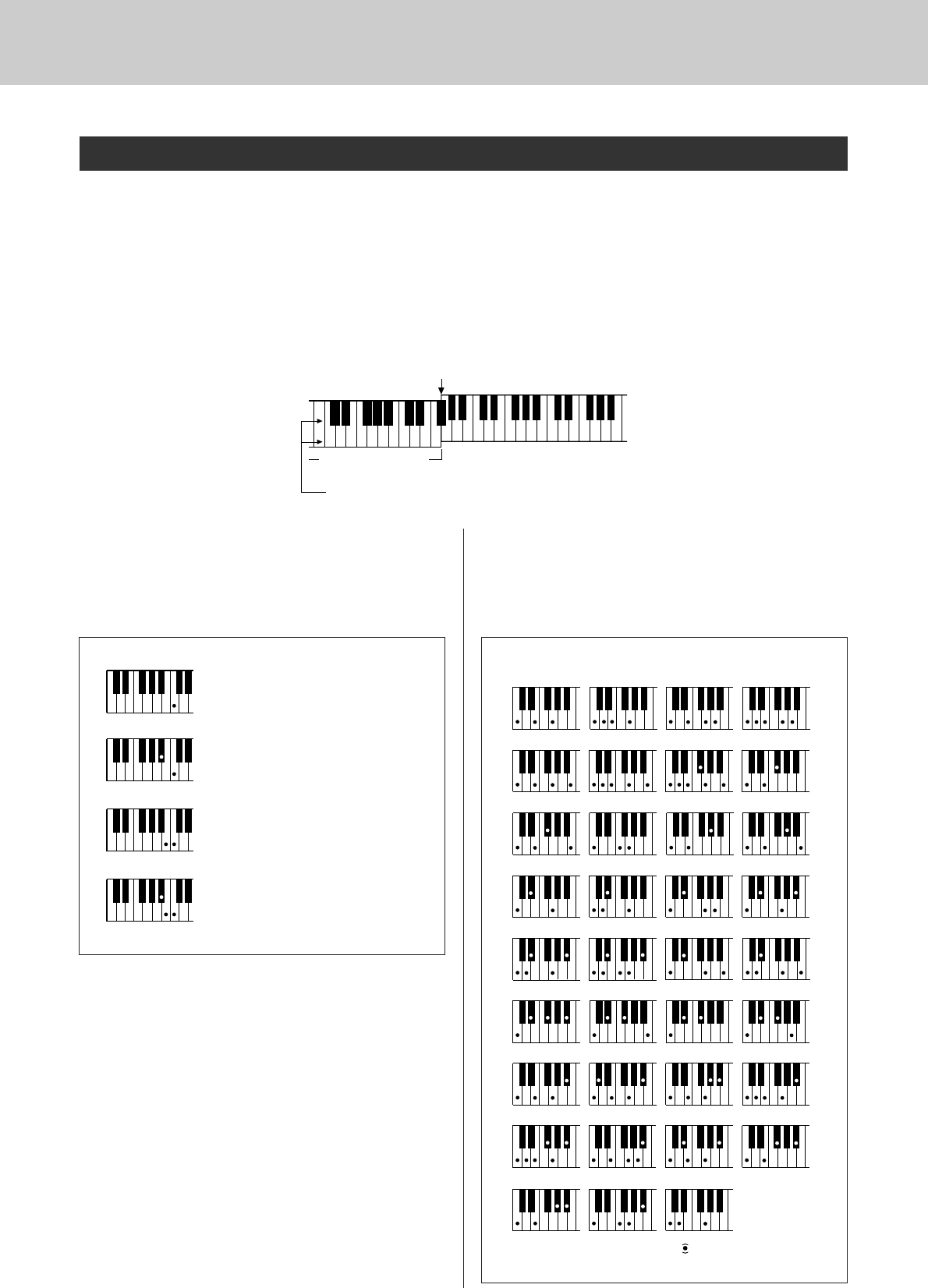
Playing Styles
32 DGX-630/YPG-635 Owner’s Manual
There are two ways of playing auto-accompaniment chords:
● Easy Chords
● Standard Chords
The instrument will automatically recognize the different chord types. The function is called Multi Fingering.
Press the [ACMP ON/OFF] button to turn auto-accompaniment on (page 28). The keyboard to the left of the
split point (default: 54/F#2) becomes the “accompaniment range”. Play the accompaniment chords in this area
of the keyboard.
■Easy Chords ● ● ● ● ● ● ● ● ● ● ● ● ● ● ● ●
This method lets you easily play chords in the
accompaniment range of the keyboard using only
one, two, or three fingers.
■Standard Chords ● ● ● ● ● ● ● ● ● ● ● ● ●
This method lets you produce accompaniment by
playing chords using normal fingerings in the
accompaniment range of the keyboard.
Playing Auto-accompaniment Chords
C
D
b
E
b
F
#
G
#
B
b
D
b
E
b
F
#
DEFGABCDEF
Split point (default: 54/F#2)
Root notes and the corresponding keys
Accompaniment
range
•To play a major chord
Press the root note of the chord.
C
Cm
C7
Cm7
•To play a minor chord
Press the root note together with the
nearest black key to the left of it.
•To play a seventh chord
Press the root note together with the
nearest white key to the left of it.
•To play a minor seventh chord
Press the root note together with the
nearest white and black keys to the left
of it (three keys altogether).
( )
( )
( )
( )
( )
( )
( )
( )
( )
( )
( )
( )
( )
( )
( )
( )
( )
( )
CmM7
CM7
C6
Csus4
Caug
CM7aug
C7aug
C7sus4
Csus2
C7
Cm
Cdim
Cdim7
C7
CmM7
(
9
)
CM7
(
9
)
Cm7
(
9
)
C7
(
b9
)
C7
(
b13
)
Cm7
(
11
)
CM7
(
#11
)
C
(
b5
)
C
(
9
)
(
9
)
C6
(
9
)
Cm
(
9
)
C7
(
#11
)
C7
(
#9
)
C7
(
13
)
C7
Cm6
Cm7
C
(
b5
)
CM7
(
b5
)
Cm7
(
b5
)
CmM7
(
b5
)
● How to play Standard Chords [Example for “C” chords]
* Notes enclosed in parentheses ( ) are optional; the chords
will be recognized without them.


















